Disclaimer: This article may contain affiliate links. Clicking on them may earn Costa Rica Vibes a commission, at no extra cost to you. Thank you for your support!
Wildlife in Costa Rica – See All the Most Exotic Animals
Wildlife in Costa Rica is one of the country’s biggest tourism draws. From sloths to blue morpho butterflies, to sea turtles, to jaguars; there is such an abundance and diversity of animals here!
I struggled in writing this article. I wanted to write about all the wildlife you might want to see in Costa Rica and all the places you can see animals.
But in all honesty, there are just too many animals to go through and every place in the country can become an exotic wildlife destination at any moment.
So, instead, I decided to write more generally about the best places to see wildlife in Costa Rica and I also created a fun little wildlife scavenger hunt.
Great Places to See Wildlife
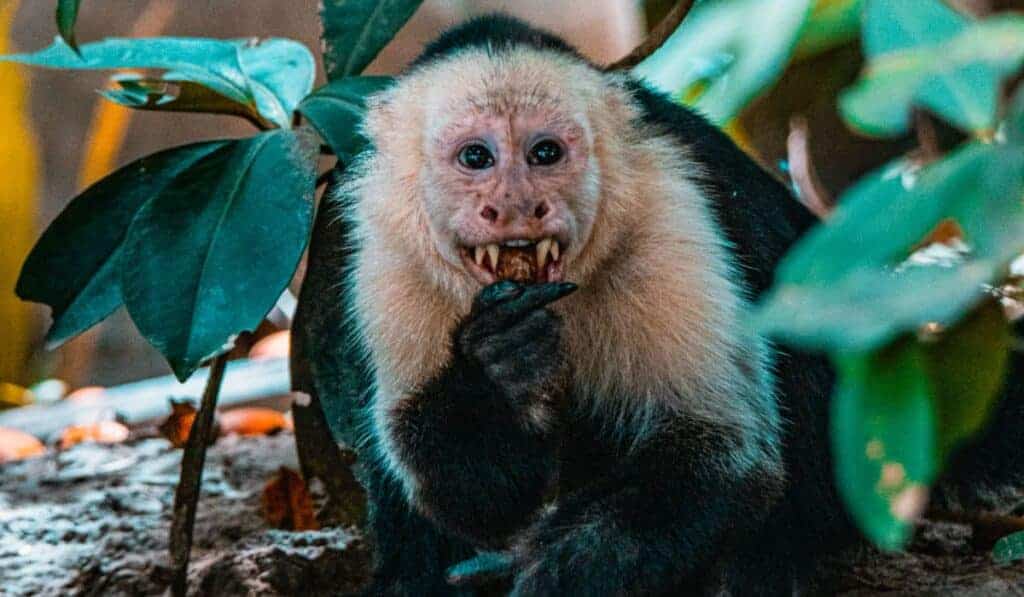
As I mentioned above, it is possible to see wildlife everywhere in the country. However, some places are a bit more filled with an abundance of wildlife than others.
National Parks
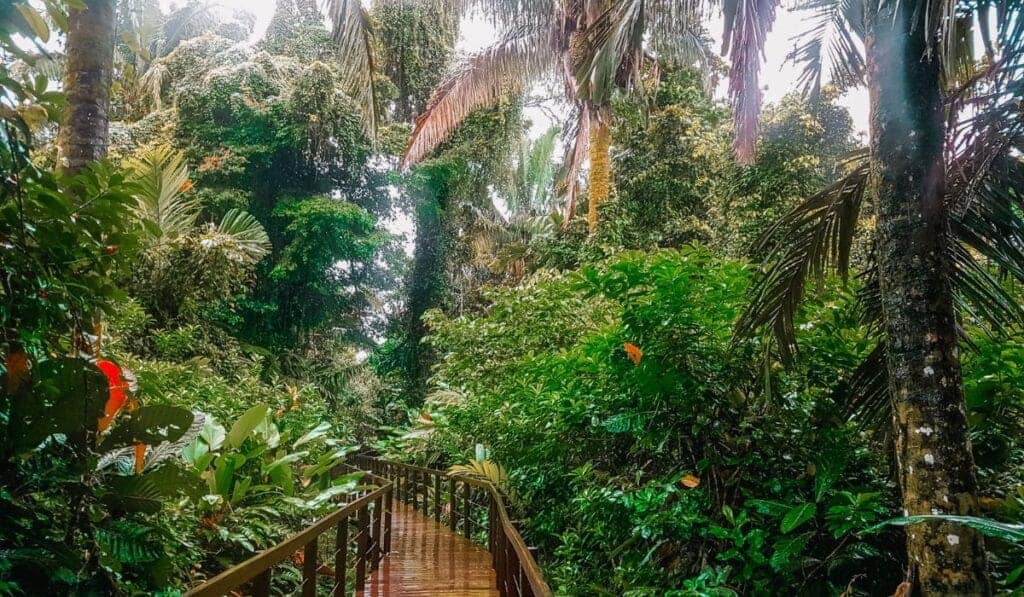
It’s probably somewhat of a given that national parks are a good place to see wildlife. We have three top national park choices in Costa Rica for wildlife.
Manuel Antonio National Park
Manuel Antonio National Park is the most popular national park in Costa Rica. An abundance of wildlife lives here, the paths are paved and well maintained, and there are beautiful beaches that visitors can enjoy as well.
In other words, it can be much more crowded here than other national parks, but for good reason.
You will definitely see monkeys while walking through Manuel Antonio, but if you would like to get a closer look at all the other wildlife hanging around here, it is often best to hire a guide.
We have a full post about Manuel Antonio National Park that will give you more info.
Corcovado National Park
Corcovado National Park is located on the Osa Peninsula near the Panama border on the Pacific coast. This park is home to 3% of the world’s biodiversity. It is the one national park in Costa Rica that you are required to hire a guide in order to explore.
Here you can possibly see wild cats, sloths, monkeys, snakes, and so much more.
We have a full guide to exploring Corcovado National Park for more info.
Also, if you like to read, last year I read this book called The Adventurers Son by Roman Dial. It is a true account written by a man whose son went missing while exploring Corcovado on his own.
I found the author to be somewhat pretentious, but it was still a really interesting read and will make you understand why guides are required when visiting this national park.
Cahuita National Park
Cahuita National Park is located on the Caribbean coast of the country near the Panama border. It is a great place to see a wide variety of wildlife including monkeys, sloths, frogs, snakes, and more!
We have a guide to Cahuita National Park for more info.
Wildlife Refuges
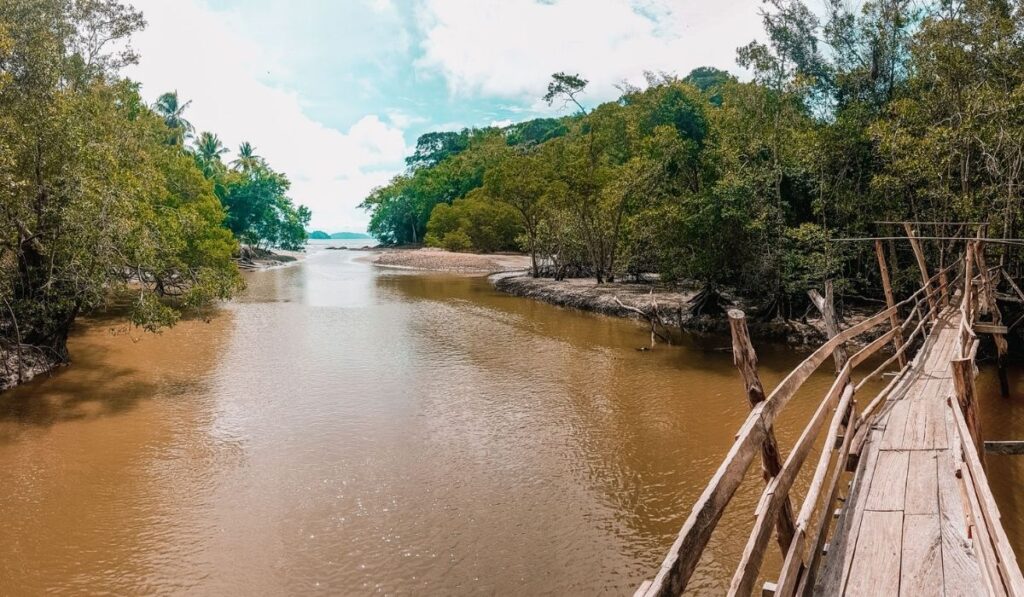
There are plenty of wildlife refuges throughout the country. These typically have a similar feel to them as the national parks. At some refuges it is possible to hire a guide or to take a wildlife tour.
Wildlife Tours
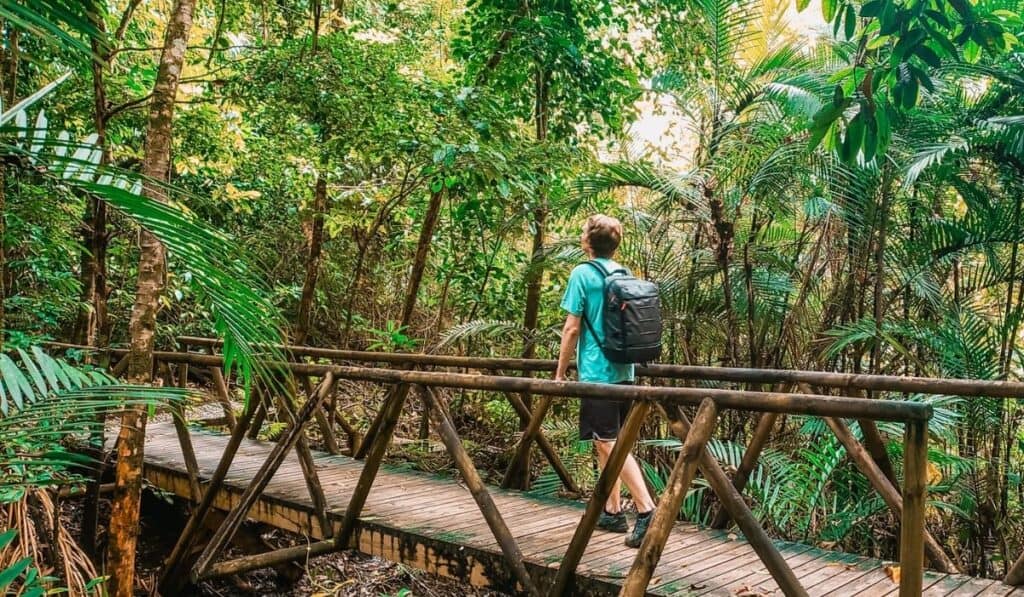
Throughout the country it is not unusual to find people leading wildlife tours through their own private land. One of our absolute favorite wildlife tours is a night tour in the Monteverde cloud forest that is done by headlamp.
We suggest booking your tour with Johnny here. Just note that this tour does not include transportation.
If you would like a tour with transportation, we suggest this one.
Animal Parks
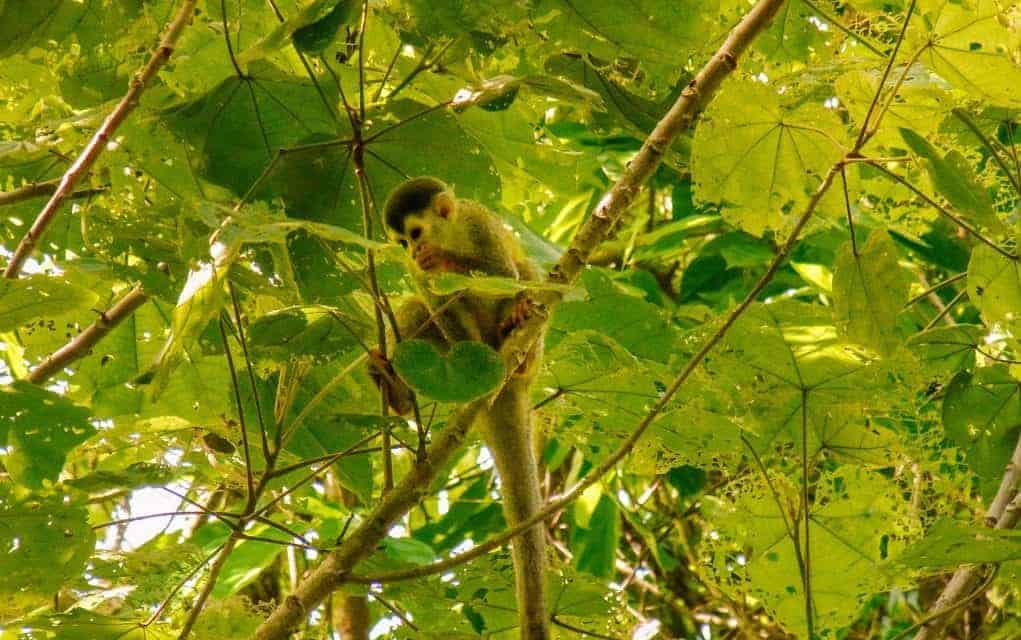
Of course it is preferable to see Costa Rica wildlife actually in the wild. However, if are short on time or have small children and want to see tons of animals in one condensed and safe environment, the best way to do that is at an animal park.
Most animal parks in Costa Rica double as rehabilitation centers which will eventually release the animals back into their natural habitat.
Our favorite animal park La Paz Waterfall Gardens. It is located about an hour away from the San Jose International Airport.
We have a complete guide to visiting La Paz for more information.
If you would like to pre-book your tickets to La Paz you can do that here.
The Wildlife Scavenger Hunt
I’ve been wanting to create this wildlife scavenger hunt for awhile and just had never gotten around to it until now. The idea is that you can print this list out for your Costa Rican travels and see how many animals you can find. It would be a fun activity to do as a family or even as a couple.
If you want to make things a bit more competitive, you can print a list out for every person in your group. The first person to spot each animal while traveling is the only person who is allowed to check it off its list. At the end of your trip, the person who has the most animals checked off becomes the wildlife scavenger hunt winner.
I didn’t put every animal in Costa Rica on the scavenger hunt (because there are just too many) and some things I kept somewhat general (because there are too many varieties), but I think you’ll enjoy it.
The Wildlife List
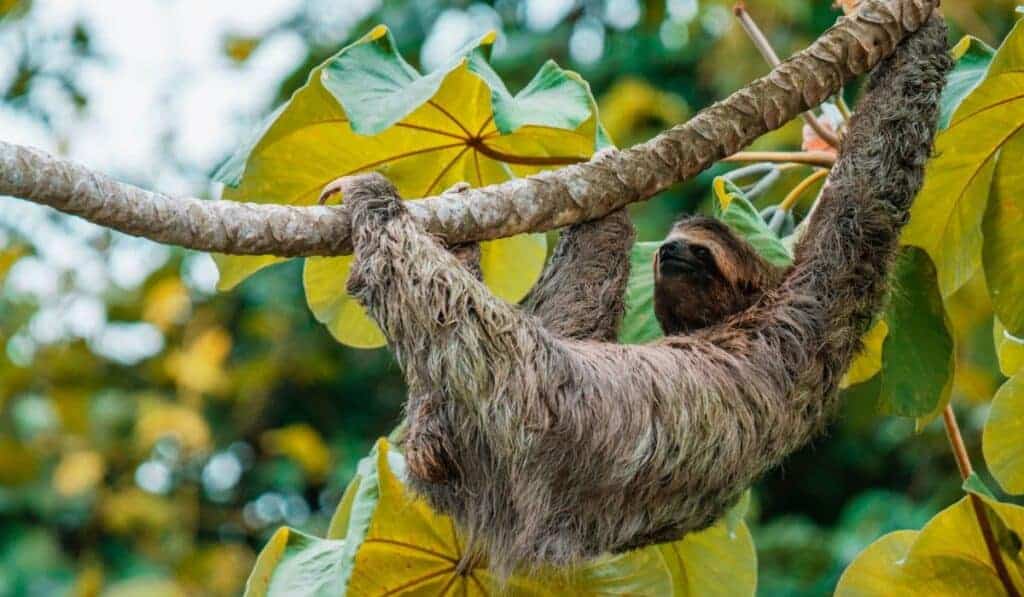
Mammals
Coatimundis
Anteaters
Tapirs
Jaguars
Kinkajous
Peccary
Mammals in Trees
Squirrel Monkey
Spider Monkey
White Faced Capuchin Monkey
Howler Monkey
Sloth (two or three toed)
Bats
Flying Wildlife
Blue Morpho Butterfly
Glasswing Butterfly
Scarlet Macaw
Toucan
Hummingbird (any kind)
Quetzal
Amphibians
Green and Black Poison Dart Frog
Blue Jean Poison Dart Frog
Red Eyed Tree Frog
Glass Frog
Marine Life
Green Sea Turtles
Leatherback Sea Turtles
Dolphins
Whales
Reptiles
Caimans
Geccos
Basilisk Lizards
Green Iguanas
A snake (stay far away from them)
Insects
Leafcutter Ants
Red Wing Grasshopper
Tarantula
Dangerous Animals in Costa Rica
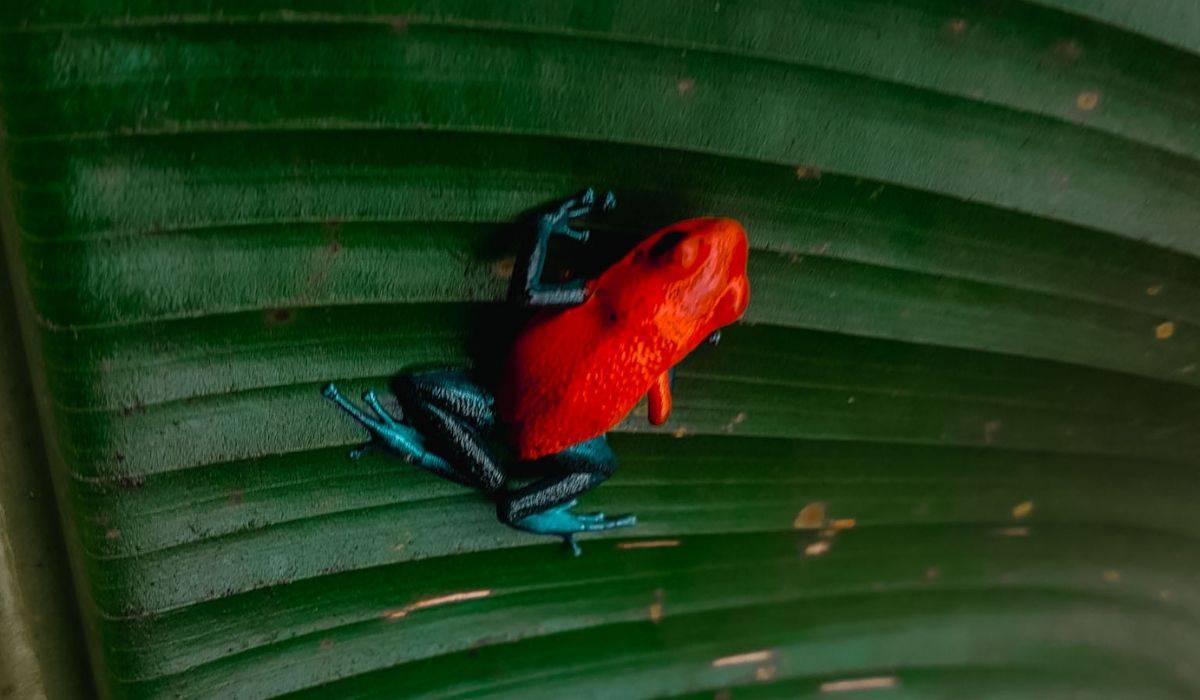
There are some dangerous animals in Costa Rica. These include poisonous spiders, snakes, scorpions, jaguars, and poisonous frogs.
The chances of one of these animals bothering you is pretty slim. They are usually way more scared of you then you are of them and will run away.
However, there are some precautions you can take to protect yourself.
- Always stay on marked trails while hiking.
- Always look where you are putting your hands. For example if you need to grab on to a tree for leverage up a hill, check the branch before grabbing it.
- I love Chacos and Keens for hiking in Costa Rica, but if you will be doing any hiking that is not on well maintained trails, please wear closed toed shoes and long pants if possible.
Even if you do take tons of precautions, obviously bad things can still happen.
Our Dangerous Wildlife Situations
In our four years in Costa Rica we have had a few wildlife situations. Two situations really stand out in my mind. One was funny and one was a bit terrifying.
The first occurred only about two months after we arrived in Costa Rica and were living in San Jose. I finished a load of laundry and as I pulled everything out to hang to dry I found a large tarantula among the clothes. It was very dead after going through a few spin cycles of water. But, for some reason, I just assumed it was fake.
Thomas was working in a kindergarten at that time and my mind just couldn’t process that there had been a tarantula in our washing machine. I thought it was some kids toy that he had left in his pocket or something. I quickly realized that my new buddy who was about the size of a lime was very real.
We never figured out how he got in the washing machine. You don’t often see tarantulas in San Jose.
The other situation was with a scorpion. We had taken a boat back to shore from a remote Airbnb we had been staying at. While on the boat it started raining sideways and I got soaked.
When we got to shore I took my backpack which was filled with all my clothes and went into the car to change into a dry shirt before our few hour-long drive home.
At the same time, Thomas was loading up the trunk of the car with our friends.
When I opened my backpack I saw a quick movement of something running further down into my bag. It was so fast, but I knew it was a scorpion.
I quickly shut the bag, threw it out of the car, and yelled to Thomas that there was a scorpion in it.
Thomas and our friends dumped every item out of the bag and couldn’t find anything. It got to the point that Thomas was stomping on all my clothes to kill anything in them before picking each item up.
They shook the bag out and still nothing.
Finally, one of our friends shook the bag so hard that the scorpion released itself from deep inside the bag and fell on the ground.
We were then able to repack everything and start our drive home. But, it was a long five-hour drive as we all worried maybe there were scorpions in other bags.
Luckily, those have been our only questionable wildlife run-ins (that we know of) in all the time we have been here.
How to Spot Wildlife
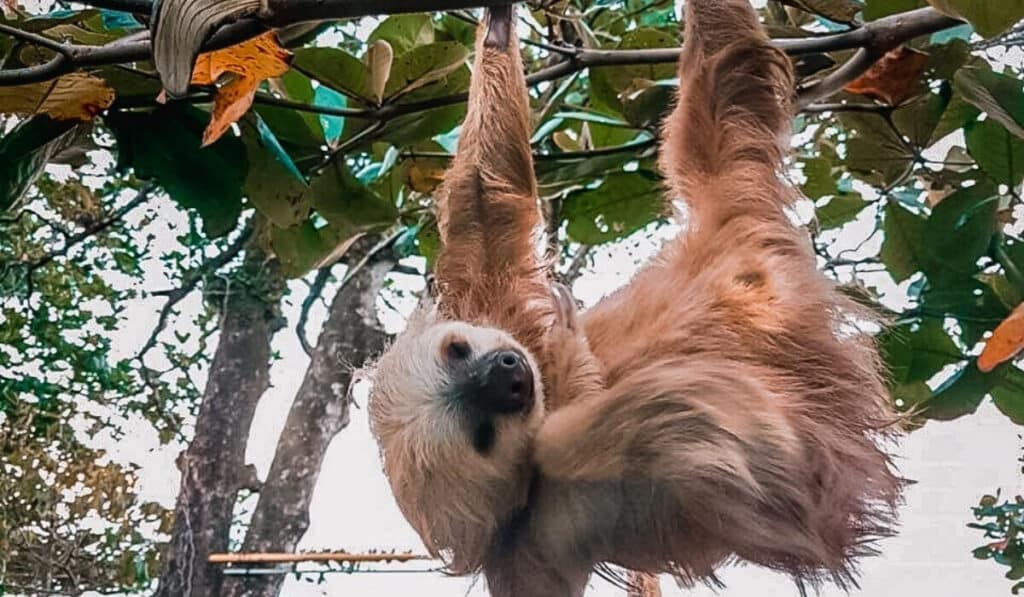
The best way to spot wildlife is with a guide. Most guides walk the same nature area every day and know exactly where the wildlife tends to hang out.
The other great thing about guides is that they usually carry telescopic lenses with them. This makes it easy for you to get a close-up view of all wildlife that is spotted.
Usually, you can even take a good photo with your phone through the lens.
If you do not want to hire a guide for your hike, just take it slow, try to listen for any noises in the trees, and look up often. The most common wildlife that you will see is usually monkeys and sloths.
Our Costa Rica Wildlife Tips
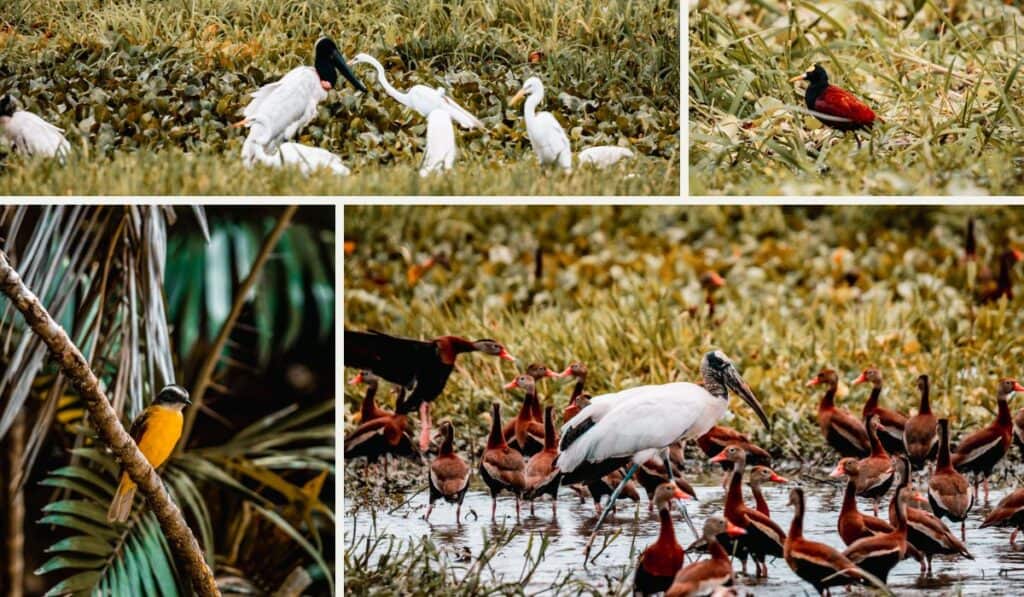
- Remember to always keep your distance and keep the noise down around wildlife. For their safety and yours, you don’t want to scare the animals.
- If you hear crazy loud hooting noises at 5 am, don’t worry, you are not being attacked by baboons. It is just howler monkeys sitting in the trees letting you know it is time to wake up. Yeap, they are the Costa Rican rooster.
- Definitely pack binoculars with you if you are interested in seeing lots of wildlife species in Costa Rica. It is possible to purchase some very affordable ones on Amazon.
- Check out our Full Costa Rica National Park Packing List on Amazon for everything you need to wear and bring when searching for wildlife
Let us know if you have any questions about seeing wildlife in Costa Rica in the comment section below. We are always happy to help you out.
You Might Also Like:
Costa Rica Travel Details: What You Need to Know
🚗 Should I rent a car in Costa Rica?
Having a rental car will give you the most flexibility when traveling in Costa Rica. This will also allow you to take fun day trips on your own.
- Save 10% Plus Other Perks with Our Adobe Rental Car Discount
- You might also consider; shared shuttle services or private transfer services
🏄🏽 How can I book things to do?
We find that Viator tends to have the most comprehensive selection of activities with secure booking and good cancellation policies.
🍍 I’m overwhelmed with planning. Can you help?
Of course! I suggest joining our Facebook group for specific questions and head to our Start Here Page to get started planning.
✈️ What is the best way to book a flight?
Usually, we have the best luck finding great prices with Skyscanner. Check for flights to both San Jose Airport (SJO) and Liberia Airport (LIR).
🛏️ What is the best way to book my Costa Rica hotels?
We highly suggest Booking.com for hotel bookings and typically use VRBO for Costa Rica vacation rentals.
🗣️What is the main language in Costa Rica?
The main language in Costa Rica is Spanish. Most people working in tourism speak at least some English.
💰 What is the currency in Costa Rica?
The currency used in Costa Rica is the Costa Rican colón (CRC). However, the US dollar is widely accepted in most tourist areas
📞 What is the best way to stay connected?
An eSIM from Airalo is the easiest way to get 4G data while traveling in Costa Rica.
🌴 Is Costa Rica safe?
Generally, Costa Rica is considered safe for tourists. However, like any travel destination, it’s best to use caution and be aware of your surroundings.
🛂 Do you need a passport to go to Costa Rica?
Yes, Costa Rica is its own country. You will need a passport to visit.

Hi! We’re Thomas (the German) and Sarah (the US-er)
We met in Virginia, moved to Germany, and since 2016 we have lived in sunny Costa Rica.
It was a spontaneous decision to move here, but it was the best decision!
Now we spend our days roaming the country to bring you the very best in Costa Rica travel here on Costa Rica Vibes.
Sarah is the writer. Thomas is the one keeping it all together.
Want the whole crazy story?

Sarah McArthur
Sarah McArthur is the co-founder and main writer of Costa Rica Vibes.
She is originally from the United States but has lived in sunny San Jose, Costa Rica since 2016.
She has traveled all over the country and now considers herself a self-proclaimed Costa Rica travel expert.
Want the whole crazy story?

